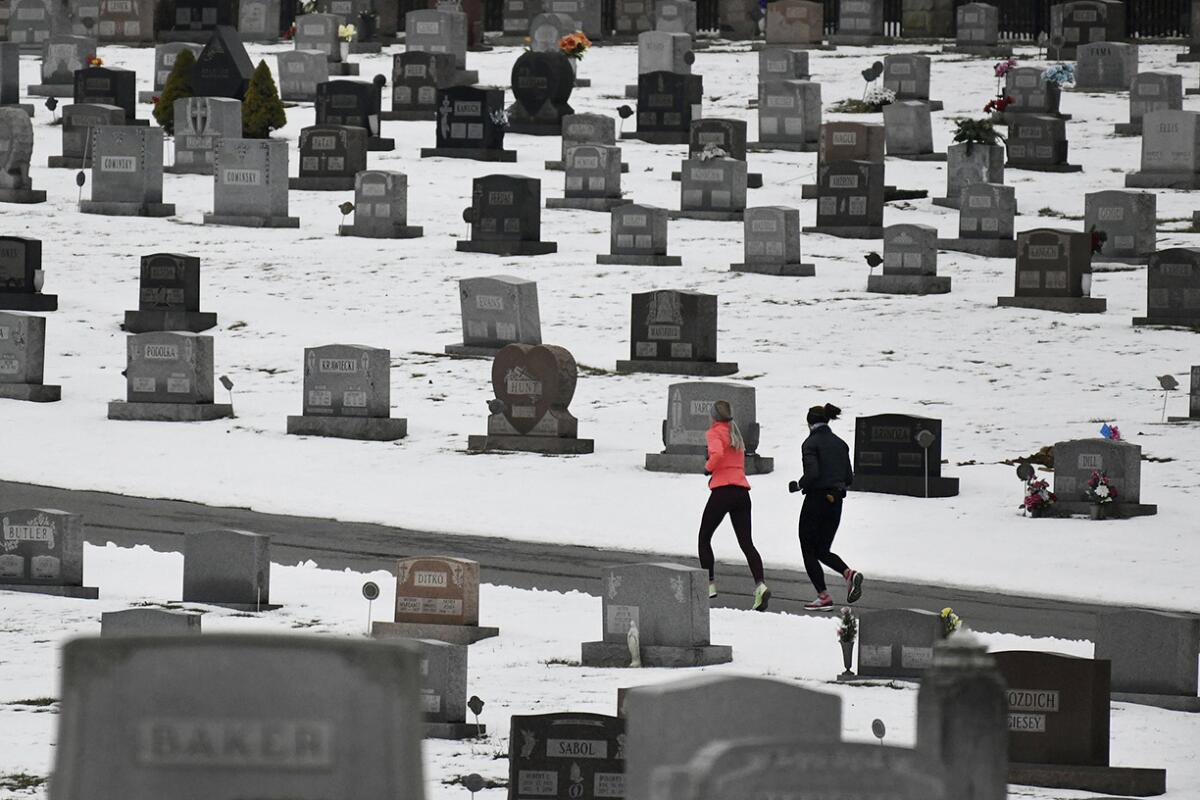U.S. life expectancy rises for the first time in 4 years — but just a little

Life expectancy in the United States is up for the first time in four years.
The increase is small — just a month — but it marks at least a temporary halt to a downward trend. The gain is due to lower death rates for cancer and drug overdoses.
“Let’s just hope it continues,” said Robert Anderson, who oversaw the report released Thursday by the Centers for Disease Control and Prevention.
The latest calculation is for 2018 and factors in current death trends and other issues. On average, an infant born that year is expected to live about 78 years and 8 months, the CDC said.
For males, it’s about 76 years and 2 months; for females, it’s 81 years and 1 month.
U.S. life expectancy was on the upswing for decades, rising a few months nearly every year. But from 2014 to 2017, it fell slightly or held steady. That was blamed largely on surges in overdose deaths and suicides.
Suicides continued to increase in 2018, as did deaths from the flu and pneumonia during what turned out to be an unusually bad flu year. But declines in some other causes of death — most notably cancer and drug overdoses — were enough to overcome that, according to the report.
Cancer is the nation’s No. 2 killer, blamed for about 600,000 deaths a year, so even slight changes in the cancer death rate can have a big impact on overall life expectancy. The cancer mortality rate fell more than 2% in 2018, matching the drop seen in 2017.
“I’m a little surprised that rapid pace is continuing,” said Rebecca Siegel, a researcher for the American Cancer Society.
Most of the improvement is in lung cancer, and it’s a result of a combination of fewer smokers and better treatments, she said.
The overall cancer death rate has been falling about 1.5% a year since 1991. It fell 2.2% from 2016 to 2017, according to the American Cancer Society.
Also striking was the drop in drug overdose deaths that had skyrocketed through 2017. The death rate fell 4% in 2018 and the number of deaths dropped to about 67,400.
Deaths from heroin and prescription painkillers went down, but deaths from other drugs — fentanyl, cocaine and methamphetamines — continued to rise. Preliminary data for the first half of 2019 suggest the overall decline in overdose deaths is already slowing down.
It’s still a crisis, said Katherine Keyes, an epidemiologist at Columbia University. “But the fact that we have seen the first year where there’s not an additional increase is encouraging.”
The national decline was driven by dips in 14 states, said Anderson, who heads the mortality statistics branch at the CDC’s National Center for Health Statistics. Those include states where overdose deaths have been most common, such as Ohio, Pennsylvania, Kentucky and West Virginia.
In Ohio’s Hamilton County, home to Cincinnati, overdose deaths fell in 2018 and preliminary data indicate another drop last year. County health commissioner Tim Ingram credited efforts to try to expand access to treatment, and to widely distribute the overdose reversal drug Narcan.
“We almost saturated our community with Narcan,” he said.
Altogether, more than 2.8 million Americans died in 2018. That’s about 26,000 more than the year before, the CDC report found. Although the number went up, the death rate went down because the population is growing and a large group are retirement-age baby boomers.
Among the report’s other findings:
• The 10 leading causes of death remained the same, with heart disease at No. 1. The death rate for heart disease declined slightly, by less than 1%.
• Death rates also dropped for stroke, Alzheimer’s disease, chronic lower respiratory diseases and unintentional injuries, which includes drug overdoses.
• Americans who were 65 in 2018 can expect to live another 19 years and six months, on average.
• The infant mortality rate fell more than 2%, to one death in 177 births.
• The suicide death rate hit its highest level since 1941 — about 14 per 100,000. The rate peaked during the Depression in 1932, then mostly declined until 2000. It’s been rising most years since then.
The U.S. has the highest suicide rate among 11 wealthy nations studied, according to a separate report released Thursday by the private Commonwealth Fund. That report also found U.S. life expectancy is two years lower that the average for the 10 other wealthy nations.






